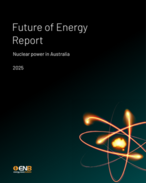This article is 19 years old. Images might not display.
On the New York Mercantile Exchange US light sweet crude for June delivery dropped to a low of US$48.30 before closing at US$48.54 per barrel on Thursday. London's Brent crude oil dropped US$1.73 to US$48.34 per barrel, also its lowest since February.
This means oil prices have now fallen almost 17% from their peak of US$58.28 struck in early April as increasing OPEC production translates into a flood of crude shipments to the US. Oil inventories in the US, the world's largest energy consumer, have climbed approximately 9% so far this year and are about 10% above the levels of a year ago.
But Qatari energy minister Abdullah al-Attiyah said on Thursday that it was too early for OPEC to decide whether to rein in production, despite the drop below US$50 per barrel. OPEC members are scheduled to meet on June 15 to plan their second-half 2005 production profile.
The Thursday drop added to the Wednesday decline of US$1.62, following the latest US Energy Information Administration report showing that country's crude inventories had risen by a surprising 2.7 million barrels last week to 213.7 million barrels, adding to the highest stockpiles in six years.
The Greenback rose to a three-month high against the euro on Thursday, extending its recent gains made on a narrowing US trade deficit and strong retail sales. Traders say further gains in the US dollar could place more downward pressure on oil prices.
On Wednesday, Iran became the latest Gulf producer to sharply increase its crude oil export prices, part of a collective move that could also curtail the recent easing in global oil prices. The substantial discounts set by Middle Eastern OPEC members can control demand and the final price paid by different customers for different qualities of crude oil.
Iran's move followed similar discounts started last week by Saudi Arabia, the world's largest oil producer. Kuwait and Iraq cut their discounts last Monday. These moves may signal the end of OPEC discount measures adopted last northern autumn to encourage consumer nations to build stockpiles in an effort to avert tight market conditions.
US and European oil refiners are apparently particularly upset over Saudi Arabia's price rise, which came just over a week after the kingdom said it wanted to bring prices down. But the Paris-based International Energy Agency said Saudi Arabia's willingness to entertain such increases might prove shortlived.
An IEA report said formula prices recently announced for June showed sharp increases for US and European customers – “and actual output might be expected to recede as a result.”
Narrower discount margins by Middle East exporters could also squeeze refiner margins that have underwritten bumper profits for refineries worldwide over the past six months.
Energy traders also digested a mixed IEA report that said oil producers should be able to meet demand later this year, although the global supply cushion would remain thin.
The IEA’s monthly Oil Market Report said higher fuel costs and weakening economic growth had slowed demand growth in China, Europe and the US during the first quarter of this year. First-quarter 2005 US demand growth slowed by 1.2%, from 340,000 bopd to 250,000 bopd.
China's demand, which had grown by 19.3% during the first quarter last year, slowed to 4.5% during the same period this year and the IEA trimmed its latest annual growth projection for China by 30,000 bopd to 470,000 bopd.
China and, to a lesser extent India, have been the prime drivers of increasing global oil consumption over the past year or two.
But the IEA report said the outlook for fourth-quarter world demand was still likely to stretch oil producer countries, as it did in the same period last year. Fuel demand typically hits a peak in the fourth quarter as consumers in the northern hemisphere build winter stocks.






















